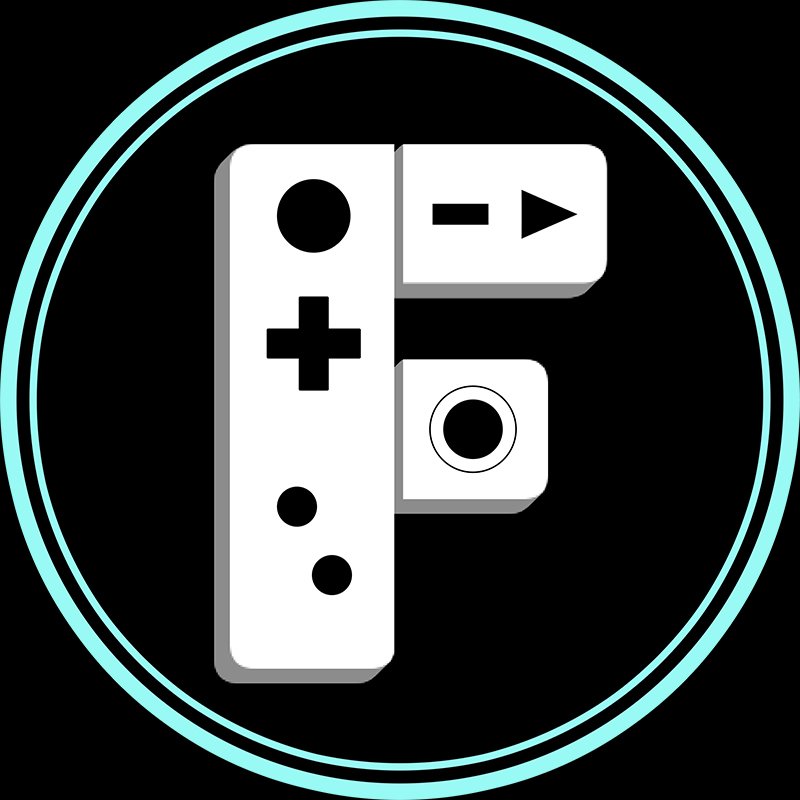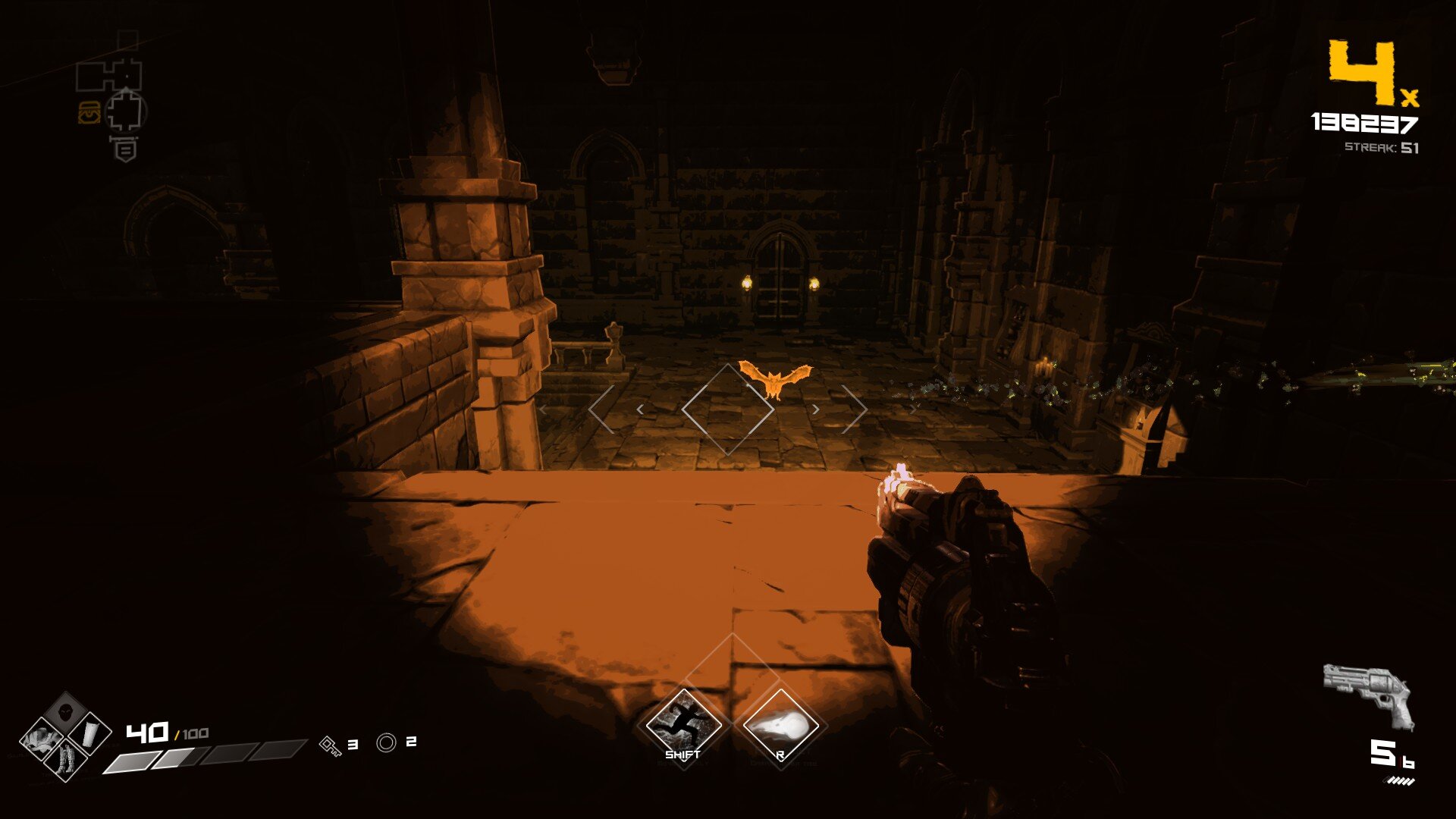BPM: BULLETS PER MINUTE (Steam) Review
I think that BPM: BULLETS PER MINUTE may be one of my favorite first-person shooters of the year, fitting nicely into a metal-fueled weekend alongside DOOM Eternal. In fact, looking at the weapon design of BPM, one could be remiss in thinking that this is a mod of DOOM (2016) but it is a separate entity where players must battle bats, warriors, dragons, and Nordic monstrosities to the rhythm of an energetic spread of heavy metal. By overcoming a randomized dungeon full of danger, players protect Asgard as mighty valkyries ultimately facing the dreaded dragon Nidhogg.
Developed by Awe Interactive, a small team working remotely out of Derby in the United Kingdom, BPM wields a spin of Norse mythology meets metal album art, the type that uses a similar color throughout the whole piece. Every two levels, the color palette changes to reflect this style. The first two levels are red with a lot of oranges and soon after we get a more green level and so on. The visuals are saturated to the point that it becomes almost abstract and there’s even a Retro Challenge that pushes that idea even further to the point that the game looks like a GBA’s attempt at rendering a first-person shooter.
The visuals can be hard to make out at first but the saturation level, and other elements, can be adjusted in the options. Players start by selecting a character, unlocking more by getting to a certain stage, and make attempts to overthrow the monsters running rampant in the halls of twisted gods.
There’s not much of a narrative going on in BPM but there is a strong sense of theme. I do wish that some of the enemies like the spiders and bats could’ve been more centralized to the themes but they are classic dungeon-crawler enemies so it makes at least some sense in the world of games. Regardless, the various creatures, heroes, and architecture keep the imagination pumping as the music courses through the body.
Boss fights can be the most epic moments of BPM.
Gameplay feels similar to that of some of the best roguelike games out there, almost like an FPS version of The Binding of Isaac. Players go through rooms in a square layout, gather power-ups, make meaningful decisions based on their health and money levels, and fight a boss at the end of each floor. Dying feels justified most of the time aside from a couple of really annoying enemy types; it takes a lot of practice to get used to even the basic bat enemies who flitter about but it’s the shield knights that can usually ruin a run without some luck and taking him down upon immediate entry. The shield knights are the only enemies in the game that make me groan and prepare for another start.
What sets BPM apart from its contemporaries is the need to fire weapons, activate spells, and even reload to the beat of the game, visualized by a handy UI element around the crosshair. If the beat is missed, those actions do not follow through. As someone who is a percussionist and who’s played metal and jazz in bands before the subdivisions of the beat only goes so far, so doing something really complicated just is not in the cards for BPM but hitting those revolver shots and slapping in each shell to the beat is immensely satisfying and begs mastery.
Sometimes floors have modifiers like darkness or ice physics.
Thankfully, one doesn’t have to be as accurate with their shots as say Quake or Unreal Tournament. As long as an enemy is within that diamond in the center of the screen the shot will almost assuredly land. Sometimes it feels a bit off but there is a stat-based around precision and there is a pickup that makes the diamond much larger. One can also target specific weak points on most creatures. Most obvious are these larger spiders with crystalized backs. Shooting those crystals does more damage and seems to interrupt the monster’s actions more frequently. There are probably more details in the combat that I’m missing but that pursuit of learning more about each facet of this indie gem is what kept me playing over and over. I was discovering these secrets all on my own, as I’ve been playing for more than a week now, and it was invigorating to explore the game through action and reaction.
After a while, most players will begin to notice that monsters also attack to the beat. This is most obvious in the fantastic boss fights that truly test the player’s musical skills, positioning, and spatial awareness. Each floor always has the same boss (at least in the current build of the game, fingers crossed for some expansions) which does enable the player to practice the beats until they get them down. Currently, all of the game’s tracks also play in the same order, which can get a touch repetitive after a while but it never got to the point of annoyance. I kept restarting runs, hours after claiming aloud that the one I was on was my last for the night, internalizing those songs and the patterns of each. Luckily, restarting a run is rather quick so I never felt like I was losing time while playing.
The soundtrack is predictable, sure, but the songs have a tendency to draw me in, reaching that state of gaming zen that I love to find in games like this. After a point, it felt like I was breathing the music.
There’s a point of zen that can be reached when playing BPM and it feels amazing to pull off.
It also helps that BPM quickly rewards players and keeps them eager to play more. Completing a set of two floors the first time unlocks a new character with the last character being unlocked after beating a run on Hard Mode. Finishing a run ascends that character, giving them an additional tool at the start. Doing so again on Hard unlocks another ability. For example, the starting character Göll gains a fireball spell that does damage over time. While I usually stick with Göll, trying to beat a run with another character is so much fun. Between standard runs, hard runs, and the five challenges there’s plenty to keep one occupied with BPM.
I definitely spent more time with it than I had initially planned.
Some of the things I loved most about BPM are seemingly minor, yet sharp details. There are a couple of shops in the game and the general store that sells armor, health, and some minor upgrades is run by this giant pudgy bird named Huggins that reminds me of Final Fantasy’s Fat Chocobo. This bird bops to his own track with such gusto and the song is this delightful whistle that I can’t help but smile every time I walk into his store. The shops also get better with repeated use, unlocking more things to purchase, and generally adding to the options the player has to complete a run. I also love how each weapon has a unique reload animation that I have to learn on top of the firing rate and damage output. My favorite is this railgun thing that bolts through foes, usually giving me a huge advantage whenever I find it. There’s also secret chests that can be found through clever platforming and players have to use their precious coins to make offerings for stats boosts. There is a lot of player feedback built into the randomized levels that I just loved interacting with.
Praise be to Huggins.
I think BPM: BULLETS PER MINUTE makes way more sense in practice. I can attempt to describe the minute ways the game feels satisfying to play but that’s harder to put into words than just sitting someone down to experience the thunderous beats and the lightning crack punctuation of a gunshot. BPM may not feel as visceral as some of the other shooters of a similar genre but this is a tremendously fun title that deserves to be played.
Overall, BPM is a playable metal opera where the instruments are guns and that’s just awesome.
SCORES
GAMEPLAY - 10/10
VISUALS - 8/10
SOUND - 9/10
CONTROLS - 9/10
REPLAY VALUE - 9/10
OVERALL SCORE - 9/10
BPM: BULLETS PER MINUTE will be available on September 15th through Steam with console ports coming sometime next year. Screenshots were captured through Steam. A digital Steam copy was provided for the purpose of review.
For more roguelike action, check out my thoughts on the frenetic action of Dead Cells. Of course, those who enjoy the idea of BPM should look into my review of DOOM Eternal.








On a path that will ultimately result in his own destruction, James Savage takes on his vampiric ex-girlfriend Draculae in El Paso Elsewhere, a moody neo-noir action shooter from Strange Scaffold.